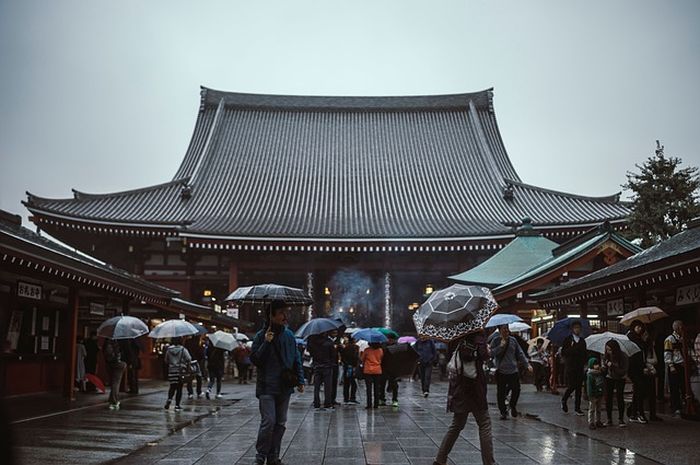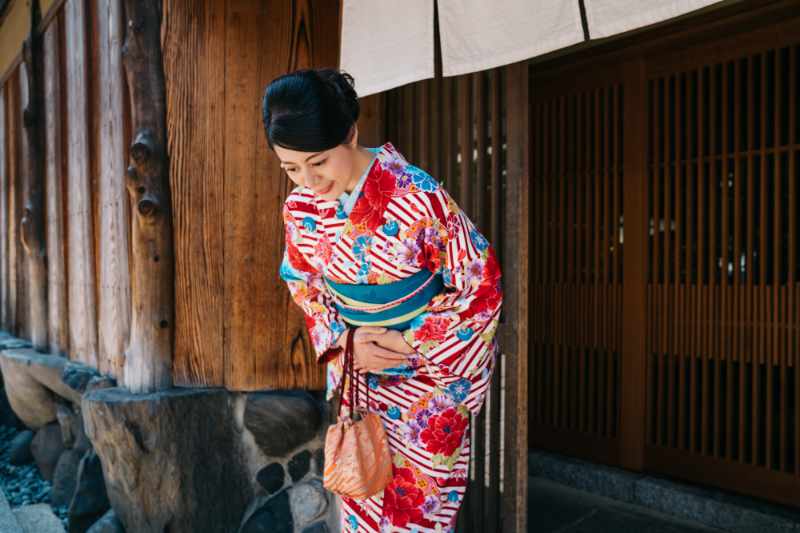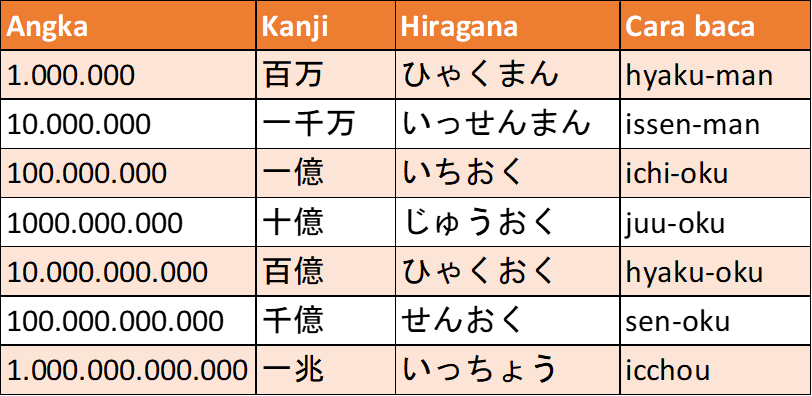- Terima Kasih in Japan: Understanding the Cultural Significance
- Cara Mengucapkan Terima Kasih di Jepang: Frasa Umum dan Etiket
- Gifts of Gratitude: Giving and Receiving Presents in Japanese Culture
- Cara Mengucapkan Terima Kasih Tanpa Kata: Cara Non-Verbal Mengucapkan Terima Kasih di Jepang
- Terima Kasih, Arigatou, and More: How Japanese Thank You Differs from Indonesian Terima Kasih
- Expressions of Gratitude in Japan
- Expressions of Gratitude in Indonesia
- Differences in Cultural Expressions of Gratitude
- The Importance of Gratitude in Daily Life
Terima Kasih in Japan: Understanding the Cultural Significance
Terima kasih is a phrase that is commonly used in Indonesia to express gratitude and appreciation. But did you know that this phrase also has a special significance in Japanese culture? In Japan, the equivalent phrase for terima kasih is “arigatou gozaimasu” or simply “arigatou”.
Arigatou is a shortened version of the phrase “arigatou gozaimasu”, which is a polite expression of appreciation. It is a common phrase used in everyday conversation in Japan, and it is important to understand the cultural significance of this phrase when interacting with Japanese people.
The Japanese culture places great emphasis on showing respect and gratitude towards others. Saying “arigatou” is not just a mere expression of gratitude, but it is also a way of showing respect and acknowledging the efforts of the person who has helped you or shown kindness towards you.
In addition to the words themselves, the manner in which they are expressed is also important in Japanese culture. When saying “arigatou gozaimasu”, it is customary to bow slightly as a sign of respect. The depth of the bow depends on the level of respect and gratitude being expressed. A slight nod of the head and a smile may also be used in less formal situations.
Another important aspect of expressing gratitude in Japanese culture is the concept of reciprocation. When someone does something kind for you, it is expected that you will reciprocate the kindness in some form. This can be through a simple gesture such as a thank you card or a small gift, or it could be a more significant act of kindness in return.
Understanding the cultural significance of “arigatou” and the importance of showing gratitude in Japanese culture is crucial when interacting with Japanese people. It is a way to show respect and appreciation towards others, and it can help to build strong and meaningful relationships.
In conclusion, “arigatou” is more than just a phrase, it is a cultural symbol of respect and gratitude in Japan. By understanding the significance of this phrase and the customs associated with it, you can communicate effectively with Japanese people and show your appreciation in a meaningful way.
Cara Mengucapkan Terima Kasih di Jepang: Frasa Umum dan Etiket
Di Jepang, ungkapan terima kasih dikenal sebagai “arigatou” atau “domo arigatou.” Kedua frasa ini sama-sama artinya “terima kasih” dalam bahasa Indonesia dan digunakan secara luas dalam percakapan sehari-hari.
Jika Anda ingin mengucapkan terima kasih kepada seseorang di Jepang, biasanya Anda bisa mengatakan “arigatou” tanpa khawatir salah. Namun, terdapat beberapa frasa lain yang mungkin berguna untuk mengekspresikan rasa terima kasih dengan lebih halus. Berikut adalah beberapa frasa yang bisa Anda gunakan:
- Arigatou gozaimasu (ありがとうございます) – Frasa ini digunakan untuk mengungkapkan rasa terima kasih yang lebih formal. Anda bisa mengatakan frasa ini kepada orang yang lebih tua atau atasan Anda.
- Domo arigatou gozaimashita (どうもありがとうございました) – Frasa ini mengandung arti ‘sangat terima kasih’. Frasa ini lebih formal dari arigatou dan umumnya digunakan setelah orang memberikan bantuan yang signifikan atau layanan yang sangat baik.
- Kansha shimasu (感謝します) – Frasa ini adalah bentuk lain dari mengucapkan terima kasih dengan lebih sopan dan mengandung arti ‘saya sangat berterima kasih’. Anda bisa mengatakan ini kepada seseorang yang begitu baik hati atau mempunyai pengaruh yang sangat besar dalam hidup Anda
Selain frasa-frasa tersebut, terdapat pula beberapa etiket dan tata cara yang perlu diperhatikan ketika mengucapkan terima kasih di Jepang. Berikut ini beberapa diantaranya:
- Berikan Tindak Balas – di Jepang, ungkapan terima kasih tidak hanya cukup diucapkan secara lisan. Anda juga perlu memberikan respons yang sesuai. Misalnya ketika seseorang memberi Anda hadiah, sebutkan beberapa hal yang membuat Anda senang menerima hadiah itu. Hal ini dapat memberikan rasa puas pada si pemberi
- Gunakan Bahasa Tubuh yang Sesuai – Ketika mengucapkan terima kasih, penting untuk menggunakan bahasa tubuh yang tepat seperti menunduk dan mengucapkan terima kasih dengan suara lirih. Ini merupakan sikap hormat kepada orang yang diberi ucapan terima kasih.
- Ucapan Terima Kasih Sesuai Status – Di Jepang, kolektivisme dan hierarki sangat dihargai. Oleh karena itu, penting untuk mengucapkan terima kasih sesuai dengan status Anda dan status orang yang diberi ucapan terima kasih.
- Menyebut Nama – Jika Anda mengucapkan terima kasih kepada seseorang dalam konteks yang lebih resmi, memanggil orang tersebut dengan nama belakang beserta “san” di belakangnya dapat menaikkan tingkat kehormatan dan terima kasih Anda.
Bagaimana? Anda sudah siap untuk mengucapkan terima kasih dengan baik dan etis jika bertemu orang Jepang, bukan?
Gifts of Gratitude: Giving and Receiving Presents in Japanese Culture
Japan is a country with a rich culture, and giving and receiving of presents is an important part of it. In Japan, gifts are not just a formality, but a way to show gratitude and acknowledge relationships.
The Art of Gift Giving in Japan
The Japanese view gift giving as an art form, and the process of selecting and presenting a gift is considered just as important as the gift itself. The gift should be of high quality and reflect the recipient’s preferences. At the same time, the gift should not appear too lavish or expensive, as this can cause embarrassment or a sense of obligation.
In Japan, it is common to wrap gifts in an elegant and intricate way, using special wrapping paper and ribbon. This process of gift wrapping is called furoshiki and is considered an important traditional art form. When giving a gift, it is also customary to bow and present the gift with both hands.
The Significance of Gift Giving in Japanese Culture
In Japanese culture, giving and receiving gifts is a way to express gratitude, respect, and appreciation. It is a way of acknowledging relationships and showing that one cares. The Japanese believe that the act of giving a gift is just as important as the gift itself, and that the process of giving a gift should be thoughtful and sincere.
Gift giving is also an important part of Japanese business culture, where it is often seen as a way of establishing and maintaining good relationships with clients and colleagues. In this context, gifts may be exchanged at the beginning or end of a business meeting, as a way of showing appreciation and respect.
Terima Kasih in Japan
Although “terima kasih” is the Indonesian expression of gratitude, in Japan, they also have their own unique way of expressing gratitude. The Japanese phrase for thank you is “arigatou gozaimasu.” It is an expression of deep gratitude and encompasses a sense of appreciation and respect.
When someone gives you a gift in Japan, saying “arigatou gozaimasu” is a way of expressing your gratitude. It is also important to reciprocate the gesture by giving a gift in return or by expressing your appreciation in some other way.
In conclusion, gift giving and receiving is a significant part of Japanese culture. It is a way to express gratitude, acknowledge relationships, and establish goodwill. As a visitor to Japan, it is important to be aware of these customs and to show respect by following the proper gift-giving etiquette.
Cara Mengucapkan Terima Kasih Tanpa Kata: Cara Non-Verbal Mengucapkan Terima Kasih di Jepang
Di Jepang, mengucapkan terima kasih tidak selalu dilakukan dengan kata-kata semata. Ada beberapa cara non-verbal yang biasanya dilakukan oleh penduduk Jepang dalam menyampaikan rasa terima kasihnya. Berikut adalah beberapa cara non-verbal mengucapkan terima kasih di Jepang:
1. Bowing
Bowing atau membungkuk adalah tindakan yang dianggap sangat penting dalam budaya Jepang. Membungkuk biasanya dilakukan ketika orang Jepang mengucapkan terima kasih atau meminta maaf. Semakin dalam bungkukan, semakin kuat pula rasa terima kasih yang ingin disampaikan. Tergantung pada situasi dan hubungan antara kedua belah pihak, bungkukan dapat dilakukan dengan beragam tingkat kedalaman.
2. Oseibo
Oseibo adalah hadiah yang diberikan pada akhir tahun sebagai tanda terima kasih kepada orang yang telah memberikan pelayanan atau bantuan sepanjang tahun. Hadiah ini umumnya berupa makanan atau minuman, seperti keju atau anggur. Penerima hadiah ini biasanya adalah kerabat, kolega, atau rekan bisnis. Memberikan oseibo dianggap sebagai sebuah cara untuk menunjukkan rasa terima kasih pada orang yang telah memberikan dukungan.
3. Omamori
Omamori adalah jenis talisman atau perasaan keberuntungan yang umum ditemukan di kuil-kuil atau tempat ziarah di seluruh Jepang. Talisman ini umumnya dijual di kuil-kuil dan dihargai sekitar 300 hingga 1000 yen. Omamori ini biasanya diberikan oleh orang Jepang sebagai tanda terima kasih pada orang lain. Talisman ini memiliki berbagai jenis, seperti untuk kesehatan, keberuntungan, cinta, usaha, dan sebagainya.
4. Melipat Kertas Origami
Melipat kertas origami adalah tradisi Jepang yang sudah berusia ratusan tahun. Biasanya, kertas origami dibuat sebagai hadiah atau pemberian dalam kegiatan sehari-hari. Seperti halnya bungkuk, bentuk origami yang dihasilkan juga berbeda-beda sesuai dengan kesan yang ingin disampaikan. Ada banyak bentuk origami yang dapat dibuat, seperti bunga sakura, burung bangau, dan binatang lainnya. Orang Jepang sering melipat kertas origami sebagai tanda terima kasih karena dianggap membawa keberuntungan dan keberhasilan dalam hidup.
Itulah beberapa cara non-verbal dalam mengucapkan terima kasih di Jepang. Dalam budaya Jepang, cara-cara tersebut dianggap sebagai ungkapan rasa terima kasih yang lebih mendalam daripada sekadar berkata kata. Mengucapkan terima kasih dengan cara yang tepat, baik dengan kata-kata maupun non-verbal, sangat penting dalam budaya Jepang.
Terima Kasih, Arigatou, and More: How Japanese Thank You Differs from Indonesian Terima Kasih
When it comes to expressing gratitude, every culture has its own ways of saying thank you. In Indonesia, we say “terima kasih”, which is a phrase commonly used to express gratitude. On the other hand, in Japan, people commonly say “arigatou” to convey their thanks. While the phrases used may differ, the sentiment and action behind showing gratitude are universal.
Expressions of Gratitude in Japan
In Japan, expressing gratitude is a fundamental aspect of their culture, and it can be seen in almost every part of Japanese society. The Japanese people have a deep appreciation for the kindness of others, and expressing gratitude is seen as a form of respect towards those who have helped them.
Aside from “arigatou”, the Japanese have other expressions of gratitude that are often used in different situations. For example, when a customer exits a store, they may hear the phrase “arigatou gozaimasu” to show appreciation for their patronage. In a more formal setting such as a business meeting, people might use the phrase “arigatou gozaimashita” to thank their colleagues for their time and effort.
Expressions of Gratitude in Indonesia
Just like in Japan, expressing gratitude is an essential aspect of Indonesian culture. Indonesians use “terima kasih” to show their appreciation for the kindness they have received from others. The phrase is commonly used in everyday interactions, such as when receiving gifts, food, or help from others.
Indonesians also have other ways of expressing gratitude, such as “thank you” or “terima kasih banyak” (thank you very much). In formal settings, such as business meetings or job interviews, Indonesians may use more formal expressions of gratitude, such as “terima kasih atas kerja sama anda” (thank you for your cooperation).
Differences in Cultural Expressions of Gratitude
While gratitude is a universal sentiment, the expressions used to convey gratitude can differ significantly between different cultures. One key difference between expressing gratitude in Japan and Indonesia is the level of formality used. In Japan, it is common to use honorific language to show respect towards others. This is why people may use “arigatou gozaimasu” instead of just “arigatou”.
In Indonesia, however, the use of honorific language is not as widely used as in Japan. This means that when expressing gratitude, Indonesians may use more informal language to show their appreciation. Additionally, Indonesians tend to be more effusive with their gratitude, using phrases like “terima kasih banyak” to convey their thanks.
Another difference between the two cultures is the tone used when expressing gratitude. In Japan, people tend to be quieter and more reserved when expressing gratitude. In contrast, Indonesians tend to be more vocal and loud, often using facial expressions, hand gestures, and exaggerated intonation to convey their gratitude.
The Importance of Gratitude in Daily Life
Expressing gratitude is an essential part of Japanese and Indonesian culture. It is a powerful way to show appreciation for the kindness of others and to recognize the effort they have put into helping us. By expressing gratitude, we also cultivate a positive attitude towards life and foster stronger relationships with those around us.
By recognizing the differences in how gratitude is expressed across cultures, we can also gain a more profound understanding of those cultures and the people who live in them. Ultimately, whether we say “arigatou” or “terima kasih”, the sentiment behind expressing gratitude remains the same, and that is what truly matters.


